
Without a doubt, the retail and business world is evolving at a breakneck pace, making it imperative for companies to adapt to survive. When it comes to advertising and moving products, companies of all sizes need to get with the trends or get left behind. While it's true that traditional advertising methods aren't as effective as they once were, there are still opportunities for those relying on digital marketing to improve their ROI.
Businesses need to adapt to the changing times by moving their operations online in order to attract new customers and maintain revenue as traditional retail experiences a decrease.
It's no secret that social media consumes a significant portion of people's time online. More and more companies are realizing the power of social media and relying on it to promote their products and services to the public. While social media marketing can help you gain exposure and a following, social media advertising is where you'll really see the most reach and success.
For rapid expansion into new demographic niches, social media and advertising is indispensable. Whether you like it or not, it's getting harder to grow your audience organically. The transition from a purely organic social approach to one that involves real money might be intimidating. As a result, it's crucial to weigh your choices carefully.
So, what exactly is advertising through social media, and why would you want to do that? Here's your chance to find out.
Looking to Promote Your Brand On Social Media?

Social media advertising is a form of digital marketing that lets you run paid ads on social media sites instead of unpaid, organic posts. Paying to promote material on social media networks is a way to get in front of potential customers interested in what you have to offer.
Advertisements like banner ads and native ads, as well as campaigns and post boosts, fall within this category. Paid social media advertising often operates on a cost-per-click (PPC) or cost-per-impression model.
When you do advertising using social media, you may reach a lot more people than just the ones who are already following you for free.
Using paid social media ads, you can advertise the content or offer that your business or social media ad agency has developed for you. You can either promote the posts in which you share unique content or create an ad centered on your service. As a result, more people will be exposed to your content, which could enhance your website's traffic and the number of leads you generate.
Social media marketing and social media advertising are two different approaches to promoting a business via social media; the former is free, while the latter requires financial investment. Paid approaches (such as pay-per-click ads) are referred to as "social media advertising," whereas organic strategies are known as "social media marketing."
What's the best option, then? Social Media Marketing vs Social Media Advertising?
To get the most out of your social media presence, you need to employ both social media marketing and social media advertising.

Leads and sales can be generated through either advertising or marketing tactics. The most efficient application of social media's tremendous potential is to leverage it for free and paid techniques to reach your target audience.
For a multitude of reasons, advertising on social media platforms is quickly rising to the top of the list of the most effective marketing strategies for business owners. Here are a few reasons for marketing on social media.
More than a billion people use social media every day. There are so many people questioning how to contact more potential clients, however, not taking note that a significant part of the public is active on social media. Both business owners and marketers can make use of their data. The ability of firms to zero in on their ideal customers based on certain demographics is a major factor in social media marketing's success. Ad targeting is an important component of marketing that should be given due consideration to prevent money from being squandered.
You can collect information about your customers that will help you tailor your marketing to them in the future. Building both a social and landing page audience is crucial to establishing consistent and future success from your marketing efforts by utilizing past data.
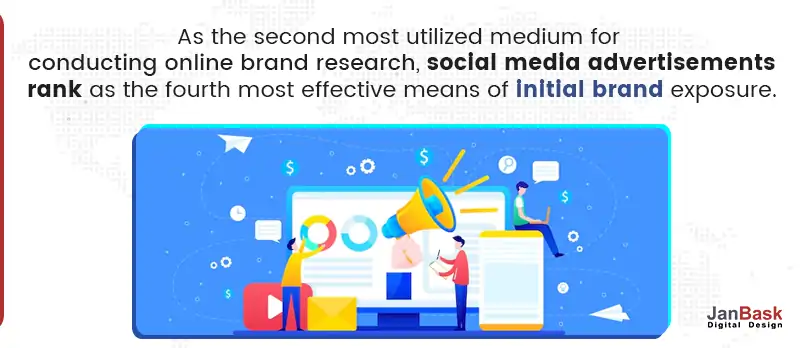
The ability to measure the efficacy of your social media ad campaigns in terms of return on investment is another major benefit. For instance, Facebook's Ads Manager platform includes such metrics as cost-per-click (CPC), cost-per-lead (CPL), and return on ad spend (ROAS) so that you can easily monitor your campaign's success.
Ad spending performance can now be monitored in real-time, which is crucial for marketers because it allows them to discontinue unsuccessful efforts while expanding the reach of successful ones. The goal should be to maximize sales with minimal advertising expenditures.
Marketers can target users on social media based on their age, gender, sexual orientation, personality, values, attitudes, and lifestyle, thanks to the psychographic and demographic data made available by social media platforms. This allows you to tailor your marketing efforts to the people most likely to convert, whether they are paying customers or simply curious onlookers.
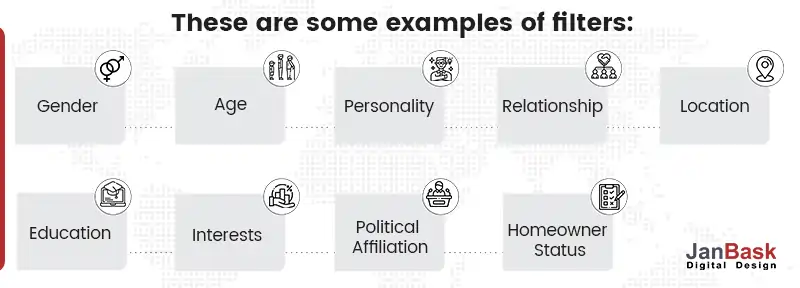
Therefore, there is a good chance that you may still target customers with social media ads even if you're working in an extremely niche market.
To advertise on social media, you can utilize a pay-per-click (PPC) model, similar to Google AdWords, which allows you to set a daily budget for your ads and only pay for them when people do the required action, such as clicking on your website. You can easily set limits on how much you're willing to spend. By establishing a 'lifetime budget,' you may determine in advance how much you are willing to spend on your ads during their whole run.
When it comes to social media, ads can be tailored to fit in with whatever you're already doing. A strong brand message must be communicated clearly. If a potential client finds you through paid advertising, they may want to check out your natural social activity before making up their mind. Whether it's organic or paid, all of your social media activity should mirror your brand.
Once you're happy with how your social media ads are performing, you can set them and forget about them. Because of this, you'll have more time and energy to devote to other areas of the business and less to web marketing. In order to ensure their continued success, however, you must constantly assess and improve upon them.
There are built-in analytics tools in all the major social media platforms that will show you where you're succeeding and where you're falling short. Then, you'll have data to compare ad performance to site traffic and revenue.
Do some research and see whether your rivals are using any advertising.

Do as much homework as you can to ensure that your initial round of advertisements has the best shot at succeeding.
People interact with others, including brands, on social media. You need to communicate with people through social media if you want to develop enduring relationships because those relationships require excellent interaction in order to flourish. Your target demographic should be a primary consideration when selecting advertisement topics.
A specific webpage on your site is associated with each social media ad. Some social media sites, like Facebook, let you embed a landing page directly within an ad. In order to produce and track leads, you need a landing page that features a call to action (CTA) like "Buy Now" and a form to fill out (such as phone number or email address).
When it comes to digital advertising, advertising on social media platforms is the second largest market.
Your sales will rise proportionally to the amount of money you spend on best social media ads because more social media ads mean more potential customers and buyers. The more people see and engage with your adverts on social media, the more likely you will be to be at the forefront of their minds when they are ready to make a purchase.
For these reasons, it's crucial to prioritize social media advertising as part of your overall marketing strategy if you want to maintain steady sales and build a long-term foundation for your company.
It should come as no surprise that the most popular social media sites for paid promotion are the same as those for free promotion. These include:
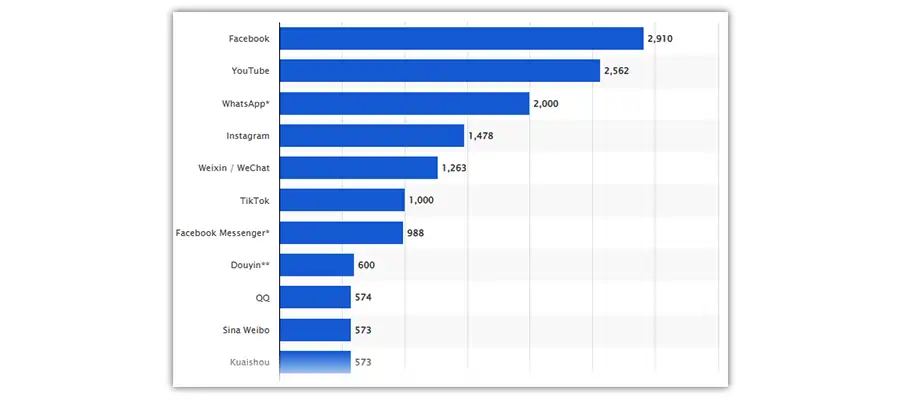
The following are the five parts of a successful social media advertising campaign:
Insight into the components of social advertising campaigns is provided by the campaign overview:
The campaign overview contains the most fundamental information about the advertising plan. Identifying information like the campaign's name, ideas/inspiration, purpose and goals, how it will help accomplish your company's objectives, hashtags, and so on are all included.
What are you hoping to accomplish with this campaign? Several suggestions are as follows:
Measurable goals and objectives can help determine the campaign's return on investment (ROI).
Try to narrow down your potential customers as much as possible. Learn more about your followers and the kind of content they engage with by checking out the statistics area of your social media profiles and sites.
Finally, it is recommended to run test campaigns on various channels to determine the audience's potential to reach by using the criteria used to define the target audience. You can estimate how many people your ad will reach on most sites. Make adjustments to the features as needed to prevent overly specific or generalized targeting.
The advertising copy and artwork for a campaign are together referred to as the creatives. The campaign's creatives should be planned with the platform's requirements and intended users in mind. For instance, Facebook users tend to ignore images that include too much text. The same people, but with different perspectives, visit various online mediums. For this reason, it's recommended that the creatives be tailored for each medium.
Facebook, Twitter, LinkedIn, Instagram, Pinterest, Snapchat, TikTok, and YouTube are some of the most popular sites for social media marketing campaigns. Various social media cater to specific demographics. It's possible, for instance, that a business-to-business (B2B) enterprise isn't the ideal fit for Pinterest or an FMCG company will not be able to launch an awareness campaign on LinkedIn successfully.
Your campaign's budget, ad format, and message will all be different depending on the social media network you choose to run it on.
The effectiveness of tracking the return on investment can be improved by dividing the campaign budget into two categories:
The costs of a social media advertising company should be kept apart from the total advertising expenditure. Payments to freelancers like a copywriter, graphic designers, or video editors, as well as purchases of stock photos, videos, or software, are, however, to be included.
Spending on the platform to launch the ad campaign is included below.
Determining the advertising budget can be time-consuming, especially for newcomers. Here is how you do it. Say you have a lead generation campaign goal of 15 new leads. You do the math and determine that the CPL on Facebook is $8. Thus, we can establish a starting point for the campaign at $120.
Given the uncertainty of the bidding process, a small increase in the advertising budget is required. Keep adjusting the bid as you run the campaign to get the most out of your advertising budget.
When you're done with your advertising drive, you'll have a complete picture of its success or failure. Compare the outcomes with the intended outcomes (reach, engagement, likes/follows, shares, etc.). In this way, campaign success and return on investment can be evaluated.
In contrast to those on search engines, ads on social media focus on reaching a specific demographic or interest group rather than specific keywords. While each system has its own quirks and preferences and even its own format, they all have a few things in common:
Similar to Google Advertisements, social ads use an auction model of PPC, with placements and charges determined by an algorithm based on factors like ad quality, maximum bid, and historical performance.
Selecting a goal is typically the first step in developing a campaign on most channels. In most cases, three are used to illustrate the funnel's tiers: its apex, midst, and base.
You can construct retargeting and alike audiences based on a user base's demographics, interests, and actions across all platforms. While this introduction to audience targeting won't help you master every aspect of social media marketing, it will provide you with a good foundation from which to start.
Each platform has a unique naming scheme, but they all share a similar account structure that allows you to categorize your advertising into groups and then into campaigns.
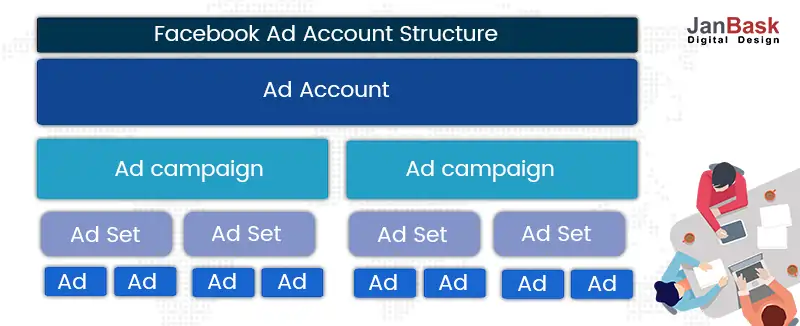
When done correctly, social media advertising may be incredibly targeted. You can aim for either new clients or current ones. There are several advertising choices available on all of the major social networks. However, that doesn't imply you have to use every single one.
Knowing which platforms are most frequently visited by your intended audience is also useful information to have at your disposal when deciding where to position your ads.
Where does your ideal customer spend the most time? Examine your brand's organic performance on various social networks to see which ones would be the best to focus your efforts on. At this point, you should have a good idea of which social media platforms are going to be most fruitful for your business.
Facebook's 1.5 billion monthly active users are primarily comprised of young individuals aged 18 to 29.
In order to get the most out of your, you must first determine what you hope to achieve. When it comes to social media advertising, you can choose from a wide variety of ad targets tailored to your specific online needs. You may count on them to include:
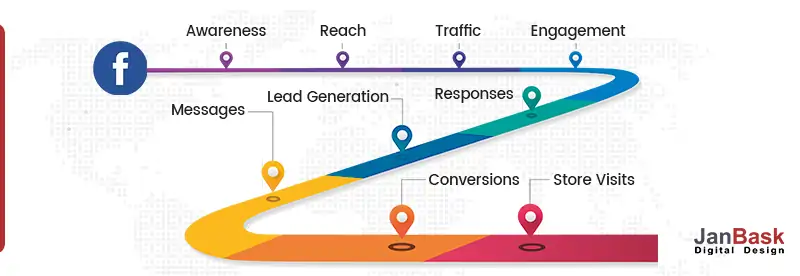
Once you know what you want to accomplish with your Facebook ad, you can go on to the next step: selecting your target audience. The following are some of the targeted advertising alternatives available on Facebook.
Following this, select a Facebook ad type.
With social media ads, you may pick from the following layouts:
How Much Do Facebook Ads Cost?
You determine the parameters. Your Facebook ad campaign will be affected most by two things: who you're trying to reach and how relevant your ads are to them. The higher the CTRs you're aiming for, the more money you'll need to spend to attract your highly sought-after demographic. The effectiveness of your advertisements will determine your Relevancy Score. Your score, from 1 to 10, is based on the actions of the users.
This is Facebook's approach to checking that the people seeing its PPC advertisements are actually interested in them. The lower the score, the more expensive it will be to provide the ad impression. Competition tends to spike around holidays and seasonal events, which might drive up prices.
Even a modest marketing effort can begin with just $100. Successful outcomes make it simple to allocate more funds. Including Facebook ads in your marketing strategy is something to consider if you aren't already doing so and if you are new to it, consider investing in social media advertising services.
More than a billion people use Instagram each month, making it one of the most popular social media platforms.
Instagram ads give you the tools to generate eye-catching images and videos to attract customers. Instagram, like Facebook, lets you choose from three different ad goals to better target your audience and accomplish your specific business objectives.
Ad goals on Instagram can be based on:
Targets for your advertisements may be selected from the following demographics:
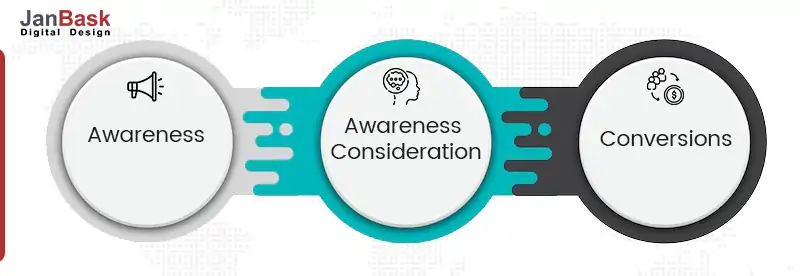
After deciding on a goal and demographics for this kind of social media marketing, you may choose an ad structure. There are a variety of presentation choices, such as:
How Much Do Instagram Ads Cost?
In the range of $1 to $2, this is the typical cost per click (costs vary widely depending on your ad type, industry, and audience size). You can begin with a low daily budget of $5 once ads are fine-tuned. At that point, you can boost your ad's exposure by spending more money per day.
Facebook's advertising fees for businesses are the same as any other: you choose the daily/monthly budget. You can opt to be reimbursed based on how many times your ad is viewed or how many times it is clicked on. Developing a successful advertising plan is essential. In order to exert more command, you can employ a social media ad agency.
Twitter has around 336 million active users every month, making it the fifth most popular social media platform among U.S. adults.
If you want to begin advertising on Twitter, you must first decide which of the following ad goals you wish to pursue.
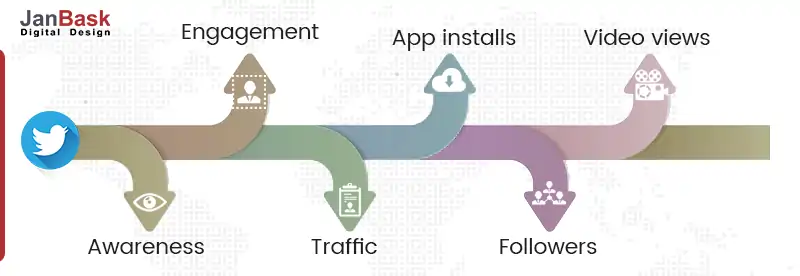
Next, you'll decide what criteria your targeting approach will follow.
At that point, you'll be able to select the Twitter ad type that best suits your needs.
Twitter's advertising choices are as follows:
How Much Do Twitter Ads Cost?
The average prices for the various Twitter advertising options are as follows:
Among social networking platforms, LinkedIn stands out as the clear leader due to its massive user base of 546 million people from over 200 different countries. About one-third of all professionals now have a LinkedIn profile.
The following are the ad targeting choices that LinkedIn provides.
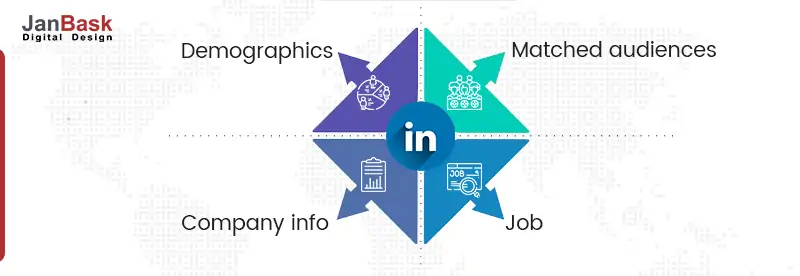
After deciding on an audience for your LinkedIn ad, you may pick from the following ad formats.
How Much Do LinkedIn Ads Cost?
Every day, you must spend at least $2. Pay-per-click (CPC) or cost-per-thousand-impressions (CPM) models are used to determine the cost of advertisements. You can manage your advertising spending with the Campaign Manager by establishing daily spending limits and maximum bids (the most you are willing to pay per click or per thousand impressions).
Snapchat, which is especially well-liked among Generation Z, has 300 million monthly active accounts.
The following are some criteria that can be used to narrow your Snapchat audience.
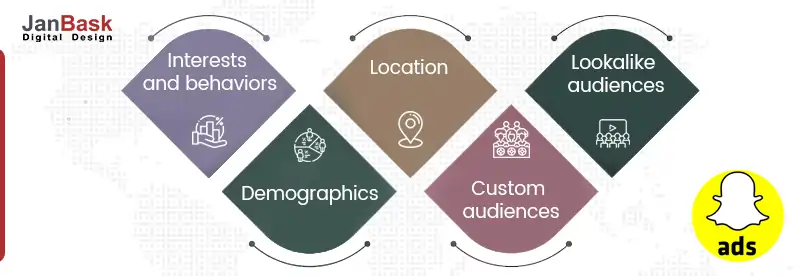
If you know who you want to see your Snapchat ad and how you want them to see it, you can choose the format that will give you the best chance of success. Snapchat's ad options consist of the following:
Understanding your business goals is crucial. This way, you can be confident that your social media advertising is effective. You'll be better equipped to select the optimal advertising option for the given platform. In fact, it directs your entire creative process.
To get the most out of these features, you need to have a clear idea of your intended audience. This guarantees you receive the best value for your advertising budget. One of the greatest advantages of advertising on social media is that it enables you to target specific audiences with your messages. Creating audience personas is a great way to zero in on certain subsets of your target audience.
You probably already use social media like Twitter, Facebook, and Instagram daily. Perhaps also Snapchat and LinkedIn.
Depending on the purpose, some of these updates may be well received by the audience, while others may not. See which ones are getting the most attention. These are the kinds of messages that would do well in social advertising.
Be cautious when expanding your social media advertising into uncharted territory. Use the information you've gleaned from your organic postings as a jumping-off point. However, remember that not all social media platforms will share the same learnings.
If you're trying to limit spending, it's important to decide if you care more about exposure or interaction. Your message may reach a large audience when you pay per impression. But if you’re paying for engagement, you only want those who are actually eager to do business with you.
Avoid spending money on activities that have no bearing on achieving your organizational objectives. Your advertisement's language should make it clear to readers whether or not it's intended for them.
Campaigns that aim to increase engagement or brand awareness are both likely to yield positive results for your company. Choose wisely so that you are only paying for actual business outcomes and not simply for their appearance.

It follows that mobile devices are the preferred means of consuming social media advertisements. Commercials viewed on a mobile device should conform to the constraints of that medium. Include pictures that can be easily seen on a mobile device.
Geofencing is a great way to advertise to phone devices when they are in the vicinity of your store if you operate a traditional brick-and-mortar establishment. Therefore, your customers will only be exposed to your advertisements when they are physically in close proximity to your store.
Getting immediate responses to your social advertising is a huge plus. The success of a promoted post may be determined rapidly, and further analysis can be performed using in-depth analytics data.
The best strategy is to run a series of commercials in front of relatively small groups of people to see which one performs best, then to implement that ad in the main campaign.
A/B testing is a method of comparing two versions of an advertisement to find out which one performs better and to fine-tune your approach. It's an essential component of your social media advertising strategy. Learn all about A/B testing on social media with our comprehensive guide.
Before launching an advertising campaign, knowing your objectives is crucial. This will reveal to you if your goals have been met. It enables you to learn from your mistakes and build upon your successes.
Having hard evidence of the value your ads provide for the business (in the form of sales, leads, etc.) is essential for demonstrating a return on investment. You'll be able to keep doing what you're doing so long as you show that your advertising is successful. Analytics tools are available on the most popular social networks to assist you in evaluating your advertising performance.
You should not only employ your most interesting pieces as ad creative but also the most successful user-generated material. These are excellent examples of testimonial advertising, which, by combining user-friendliness and feedback, have been shown to provide a positive return on investment.
Once you've mastered social media advertising, it's time to start thinking about combining your search and social media campaigns. You can leverage the best-performing keywords from your Google Ads data to improve your ad content, or you can narrow your audience's focus depending on how they interacted with a search ad offer.
Visual content is prominent in social media feeds, which are also often updated. Ads on social media need to be updated more frequently than on any other channel.
Knowing your target demographic is essential. Is there a particular place they frequently go while surfing the web? Once you've figured it out, you can begin evaluating the efficacy of your advertisements on those channels.
There's no guarantee that any one social media site will be a good fit for your brand, even if it happens to have the target demographic you're looking for. Think about what you hope to get out of your social media experience before making a commitment.
Hopefully, at this point, you have amassed sufficient resources to launch your paid social approach. The first is to ensure that you are allocating a sufficient budget to your campaigns, as doing so might severely restrict the effectiveness of your advertisements and render your investment useless. Two, delay the launch of new platforms until they are ready. Don't rush things; instead, give each platform some time to gather the data it needs to begin optimizing delivery with the help of machine learning. Finally, ensure your accounts are optimized by reporting on your ads and conducting regular audits.
It is a great deal of work to run an ad campaign on social media. You need to strategize, make, test, analyze, and control your advertisements. JanBask can ease the burden of managing and analyzing your social media advertising strategy.
We can assist you in developing successful advertising strategies across various social media platforms. As one of the top social media advertising agencies with experienced social media advertising specialists, we will be by your side every step of the way, whether you're looking to increase brand awareness or revenue.
Looking to Promote Your Brand On Social Media?

Q1. Which social network do you think has the largest user base?
Ans. Over 2.89 billion people around the world log in to Facebook every month, making it the largest social network by far. As of right now, the firm also owns four of the most popular social media networks, each of which has more than a billion unique monthly visitors: Cor Facebook, Whatsapp, FB Messenger, and Instagram
Q2. How many people utilize social media?
Ans. In addition to allowing users to interact with friends and colleagues across geographic, political, and economic boundaries, the most popular social networks are typically offered in more than one language. As mobile device usage and mobile social networks continue to gain popularity in previously neglected countries, it is anticipated that social networking sites will reach 3.96 billion users by 2022, and these figures are expected to continue to climb.
Q3. How to use Social Media Advertising?
Ans. Paid social media advertising lets you promote custom-made content or an offer made by your business or advertising firm. You can either create an ad for your product or service or promote the social media postings in which you've already published unique material. Because of this, more people will be exposed to your material, which may enhance your website's traffic and the number of leads you generate.
Q4. During your social media marketing campaign, what content should you share and post?
Ans. Social media ads can be used to market a wide variety of products and services. An instructional guide, special offer, brand overview, consulting services, and other products and services could all be promoted. Your advertisement, regardless of its purpose, should always feature a call to action, an interesting picture or video, and a link to your website or a landing page that is directly related to the advertisement.
G
Thanks for sharing such an in-depth guide.
J
Can you share insights on YouTube advertising?
H
That was well explained.
M
Great breakdown of all ads types.
P
Very interesting read!